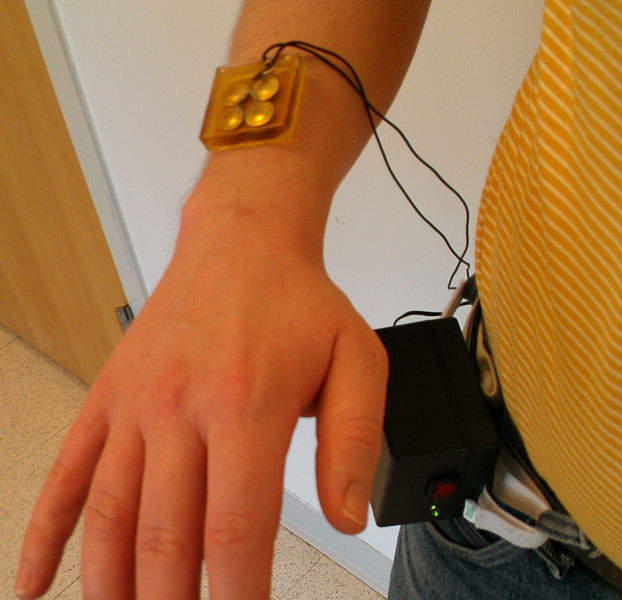Biomedical engineers at Drexel University in Philadelphia designed an ultrasound device, which early tests show can speed healing of venous skin ulcers that are normally slow to heal. The team led by engineering professor Peter Lewin expects to publish its findings later this month in the Journal of the Acoustical Society of America.
Venous skin ulcers are shallow wounds that result from poor circulation in the veins that do not return blood back to the heart, a condition known as venous insufficiency. The sores normally occur in the lower leg, between the ankle and the calf.Venous ulcers can take months to heal, and account for 80 percent of all chronic wounds, according to National Institute of Biomedical Imaging and Bioengineering (NIBIB), part of the National Institutes of Health, that funded the project.
The condition affects some 500,000 Americans, but that number is expected to increase, says NIBIB, as the rate of obesity rises. The agency estimates venous skin ulcers cost the U.S. over $1 billion per year. The university says treatment costs can run as high as $2,400 a month.
Current treatments for venous skin ulcers are either passive, such as compression stockings to help improve leg circulation, or intrusive and expensive surgical procedures, such as skin grafts. For an alternative therapy, the Drexel team built a battery-powered device designed as a patch that sends ultrasound waves directly to the wound (pictured at top). Some 20 venous skin ulcer patients wore the device during their weekly clinical examinations, as well as receiving standard compression therapies.
The upcoming journal article, say the researchers, reports on tests of the device emitting ultrasound at various frequency levels and for varying amounts of time, compared to a small number of patients receiving the standard care. Overall, patients receiving ultrasound treatments saw their wounds shrink in size after four weeks, while the patients not receiving the ultrasound found their wounds got larger during this period.
The tests measured the sizes of skin ulcers of groups of patients after ultrasound treatments at 20 or 100 kilohertz, and for 15 or 45 minutes. The group of patients receiving 20 kilohertz ultrasound treatments for 15 minutes had the most improvement, with all five patients reporting complete healing by the fourth treatment.
Lewin says building the device was particularly challenging, since most off-the-shelf ultrasound devices “require a large apparatus and need to be plugged into the wall. We wanted this to be fully wearable as well as portable, so we needed to make it battery-powered.” The device weighs about 100 grams (3.5 ounces) and is powered by two rechargeable lithium-iron batteries.
The researchers plan more lab studies to better understand the role ultrasound plays in healing these kinds of wounds, including its effect on immune-system cells and production of collagen. The team is also developing a companion device using near infrared spectroscopy to monitor healing of the wound, particularly in the earlier stages when healing may not be visible to the naked eye.
Read more:
- PET/MRI Scanning Technique Devised to Track 3-D Motion
- New Contrast Dyes Improve Medical Images, Reduce Prep Time
- Software Advances Improve Cardiac Ultrasound Images
- Kidney Stone Monitor Boosts Treatment Effectiveness
- Home Computer Fetal Ultrasound System Developed
* * *


 RSS - Posts
RSS - Posts